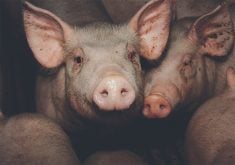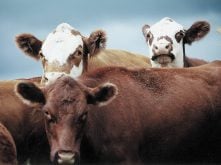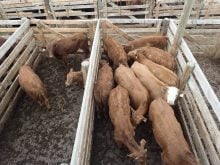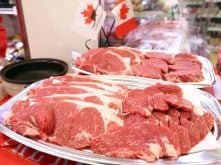LEEDALE, Alta. – Iain Aitken walks through his pastures on a cold, snowy October day and lifts bundles of grass that lay like thick swaths.
Under those bundles is enough green biomass to sustain his cows for 10 months.
In less than 10 years, the Scottish immigrant has turned around 600 acres of overgrazed, neglected pastures into lush grazing that saves time and money. With his system, he figures his cow production costs are 70 cents to $1 per day.
An experienced grazer in Scotland, Aitken found climatic conditions on the Prairies different than what he was familiar with so he sought help from the Grey Wooded Forage Association and took the advice to heart.
Read Also
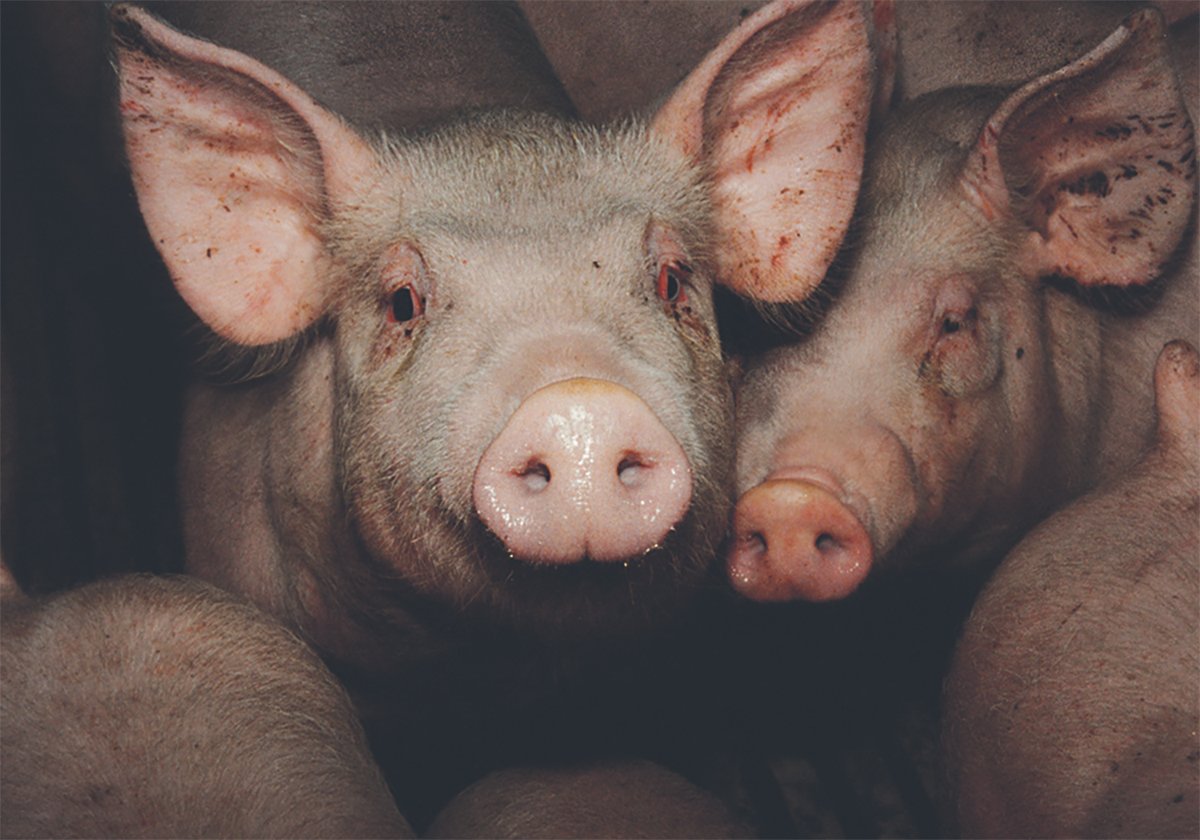
The Western Producer Livestock Report – October 30, 2025
Western Producer Livestock Report for October 30, 2025. See U.S. & Canadian hog prices, Canadian bison & lamb market data and sales insights.
He starts writing a grazing plan in January.
“We end up with quite an elaborate plan,” he said.
“It has benefited my operation more than anything else, having a grazing plan.”
This year’s rainfall was about half of the normal 430 millimetres, so he adjusted the plan nearly every week.
Careful planning
Much of the plan dictates timed grazing and rest periods. He also keeps track of the number of days of grazing he gets from each field. A feed analysis reported that quality is good enough this year so the cows don’t need supplements.
None of the pastures were renovated; instead nature and planned grazing were allowed to do the job because Aitken realized fertilizer could not entirely restore all that was wrong with them.
“You have to work with what nature provides,” he said.
He spreads manure from his corrals but because the cattle do not spend much time there, the supply is limited. As well, he does not want to make hay. He would rather turn the cows out to forage for themselves than haul feed to them and haul out the manure afterward.
The cattle are rotated through a series of pastures and never go to the same paddock at the same time each year, to preserve grass diversity.
Some pastures are not grazed for a year to encourage more growth of grasses, bushes and other plants, including thistles, which cows eat, especially in fall when the plants are brown and protein levels increase.
The cows go to banked grass after weaning in late October, where Aitken expects them to put on enough extra weight to carry them through the winter.
“Last year we had fairly open weather and the cows got really fat. I like that because they can stand the cold weather better,” he said.
Last year he grazed through mid-January, even when temperatures fell to -30 C for six weeks with 35 centimetres of snow. The cows came through in good condition and were able to paw through the snow for feed.
“Cows will keep on digging as long as they get a reward,” Aitken said.
He buys local feed for the two months when cattle must be fed before calving. The cows receive straw and silage and calves finished for beef are offered high quality silage in feeders to control waste.
His highest quality grass is saved for mid-April grazing when cows are calving. They are then turned out on fresh grass in May to rebuild themselves and support their calves. Under this system, Aitken has noted fewer problems with scours and calves suckling.
The plan also works because of his cow type.
He raises commercial cattle as well as purebred Luings, a hardy Scottish breed that he said can forage through anything, including thistles.
“The cows have done very well on this but it depends on the type of cows you’ve got. We need cows that can utilize this rougher stuff.”
He said some people may think his herd is old-fashioned with shorter, stockier cows, but he wants thicker animals that can go into winter with extra condition to survive.
“A cow that is going into the winter in our system with 200 extra pounds of fat on her back works well in our system.”



